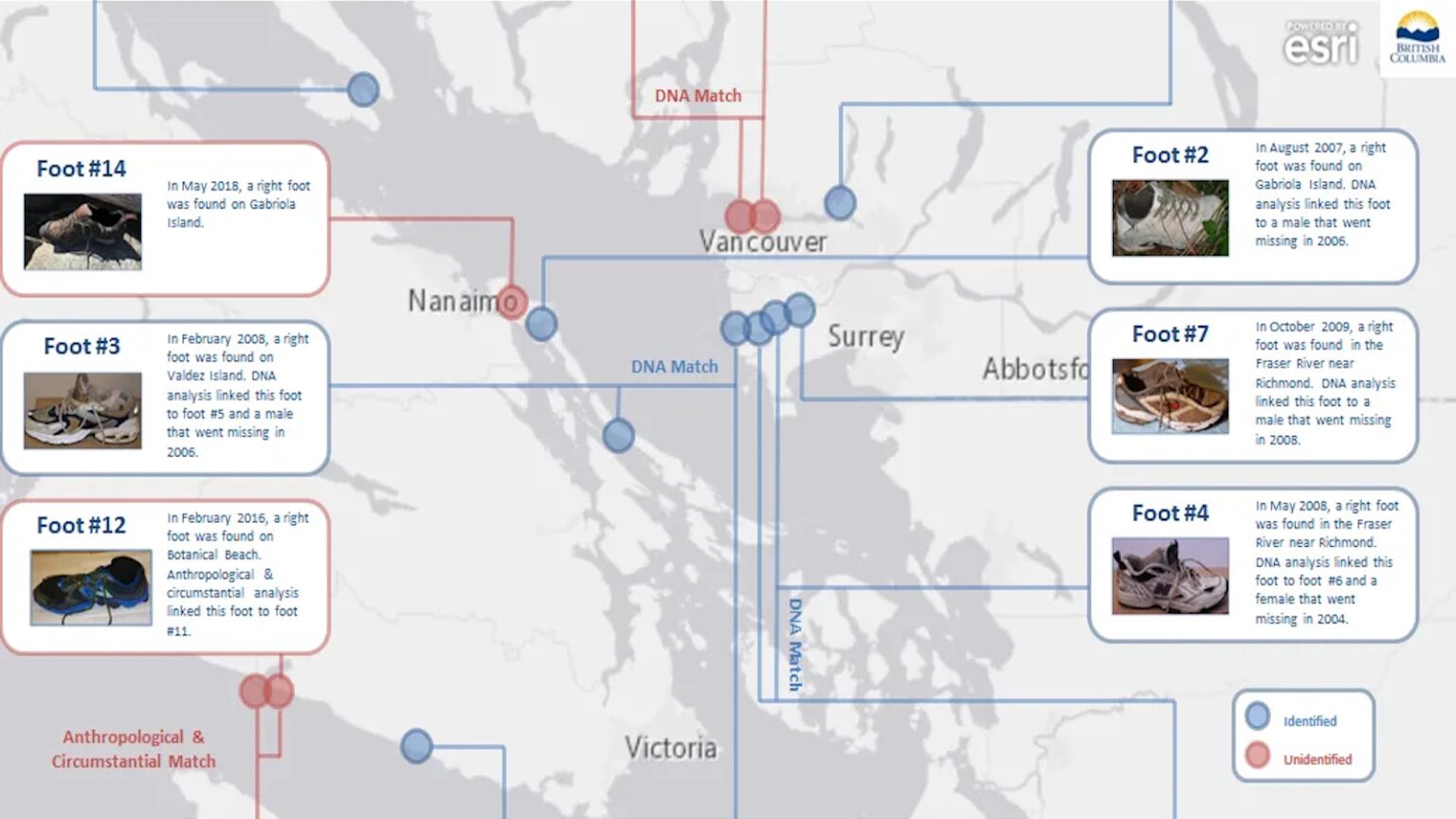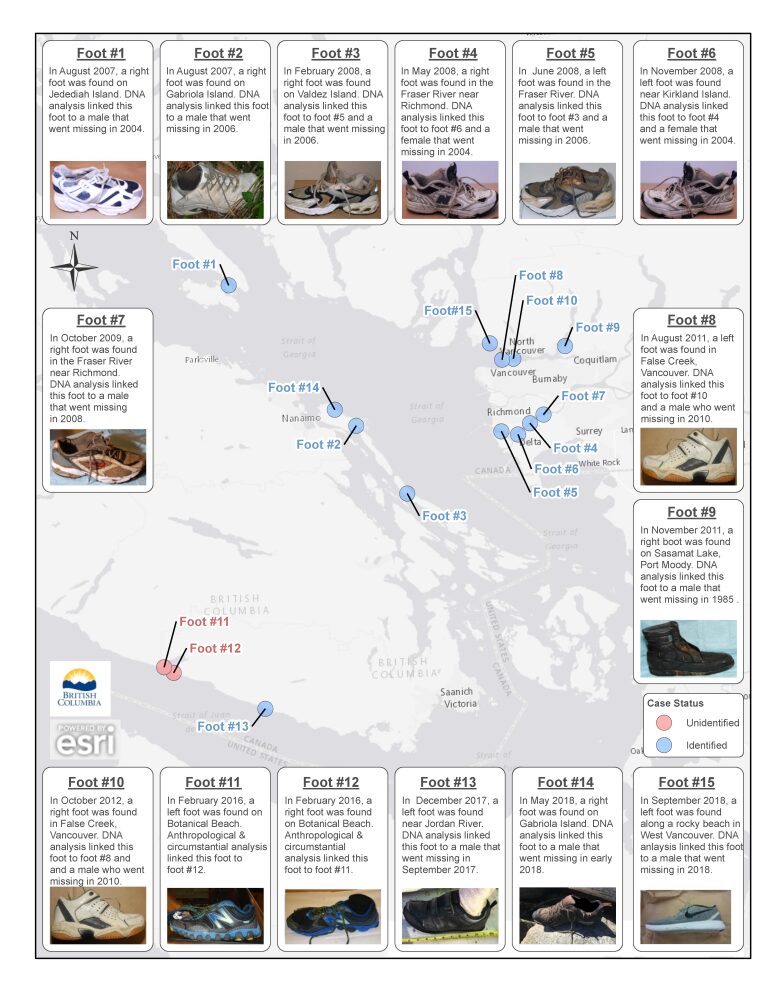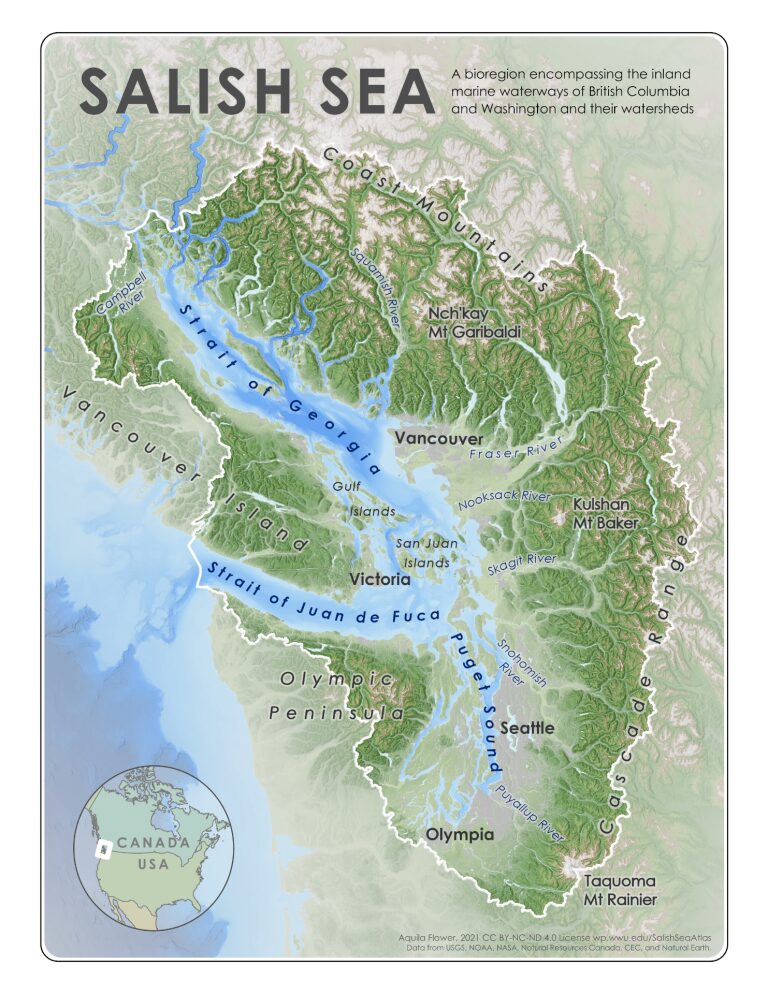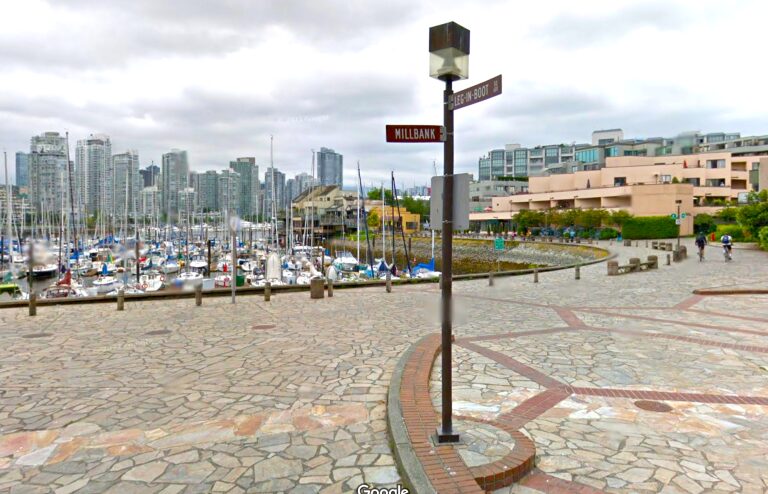
- One foot washes up? That's hardly news. But another one? And another one?
- In all, 21 feet have been found since 2007 on the shores of the Salish Sea.
- Whodunit? Not aliens, the mafia, or a serial killer. In fact, nobody at all is to blame.
Make that a headline-grabbing mass murder mystery. Over the past decade and a half, 21 feet have washed up on the shores of the Salish Sea, the body of water that straddles the U.S.-Canada border on the Pacific coast. That's just one foot short of an entire soccer team.
A sloppy serial killer?
Is this the work of a sloppy serial killer with a foot fetish? Well... no. Perhaps the weirdest thing about the Case of the Severed Feet is that foul play has been ruled out — but not before the mystery had gone viral, puzzling people around the world and inspiring crime writers as far afield as Norway.
It all started in the summer of 2007. On August 20, a girl spotted a blue and white Adidas sneaker on the shores of Jedediah Island, between the mainland of British Columbia and Vancouver Island. Peeping inside the shoe, she was shocked to find it contained a decayed male right foot.
Just six days later, another size 12 sneaker, this time a black and white Reebok, was found on Gabriola Island, about 30 miles to the southeast. Inside, another decayed male right foot. The Royal Canadian Mounted Police was baffled.
"Finding one foot is like a million to one odds, but to find two is crazy," said RCMP spokesman Garry Cox. "I've heard of dancers with two left feet, but come on."
The case refused to go cold. Over the course of the next year, five more severed feet turned up.
- On February 8, 2008, yet another male right foot washed up on Valdes Island. This time, a size 11.
- On May 22, a female right foot was found on Kirkland Island, tied up in a blue and white sneaker of a brand called New Balance.
- On June 16, two hikers on Westham Island found the first left foot. It matched the right foot found earlier on Valdes Island.
- On August 1, a camper discovered a male right foot inside a black size 11 shoe in Pysht, Washington — the first find on the U.S. side of the border. Severed feet seeming to be a Canadian thing, police suspected the currents may have carried this specimen across the international maritime border, just 10 miles to the north.
- On November 11, a woman's left foot was found in the Fraser River in Richmond. The shoe brand was New Balance. DNA testing matched it to the foot found on Kirkland Island.

Three keys to the mystery
In 2009, just a single foot was found in Canadian waters; two more in 2011, and one again in 2012. (Overall, six feet would show up on the U.S. side, including the most recent one, in January 2019 on Jetty Island, just off Everett, Washington.)
Though the discovery rate slowed down, the mystery endured. But scientists formulated their own theories, less spectacular than those in the media. By the time another matching pair showed up at Botanical Beach on Vancouver Island, days apart in February 2016, they were pretty sure.
Three elements were key to finding the solution to the grisly mystery: a better understanding of body decomposition in the sea, an appreciation of changes in the footwear industry, and DNA research.

Let's start with what happens when a dead body ends up in the ocean. (If you're of a tender disposition, avert your mind's eye now, because the process is not pretty. You've been warned.)
Bodies don't just decompose; when they sink, they are picked apart by scavenging creatures of the deep. Those bottom-feeders prefer parts of the body with softer tissues — around the orifices, but also including the ankles. Research from 2007 by Simon Fraser University for the Canadian police on body decomposition, conducted in the very waters where many of the feet would be found, showed that deep-dwelling fish, shrimp, and crustaceans could reduce a corpse to a skeleton in under four days.
While what remains of the body stays put on the sea floor, the gnawed-off feet float to the surface — at least, if they're buoyed by recent-generation sneakers. That's because they are generally made of lighter foam than their pre-2000 counterparts, and they often also have soles that contain air pockets. Additionally, the area's topography and prevailing westerly winds help bear flotsam and jetsam ashore around the Salish Sea.
Canada, putting its best foot forward
DNA analysis allowed the RCMP to link most of the feet to persons that had been reported missing and were presumed dead due to accident or suicide. The New Balance sneakers belonged to a woman who had jumped off a bridge; the first foot from Jedediah Island was linked to a man known to be suffering from depression who had been missing since 2004. The foot found in November 2011 was matched to a local fisherman who had gone missing in 1987. In all, three pairs of feet were "matched" to each other.
As mentioned, the latest sneakered foot turned up in 2019, and given footwear trends, it is unlikely to be the last. However, the phenomenon of severed feet was known locally long before modern sneaker technology made its occurrence more likely.
One incident was commemorated with its own place name. In 1887, police found a severed leg in a knee-high boot in the woods of False Creek, a narrow inlet which these days separates downtown Vancouver from the West End. It was surmised the leg had belonged to a man who had gone missing some days before, and that it was all that remained of him after an encounter with a local cougar. The local trees have gone, but the area where the police made their find over a century ago is officially known as Leg-in-Boot Square.




I just watched a television commercial out of California promoting food-stuffs that are digested more easily to make butt-sex less messy. [Link]
If they can put this out there then the 'floating sneaker' sale aught to be a piece of cake.